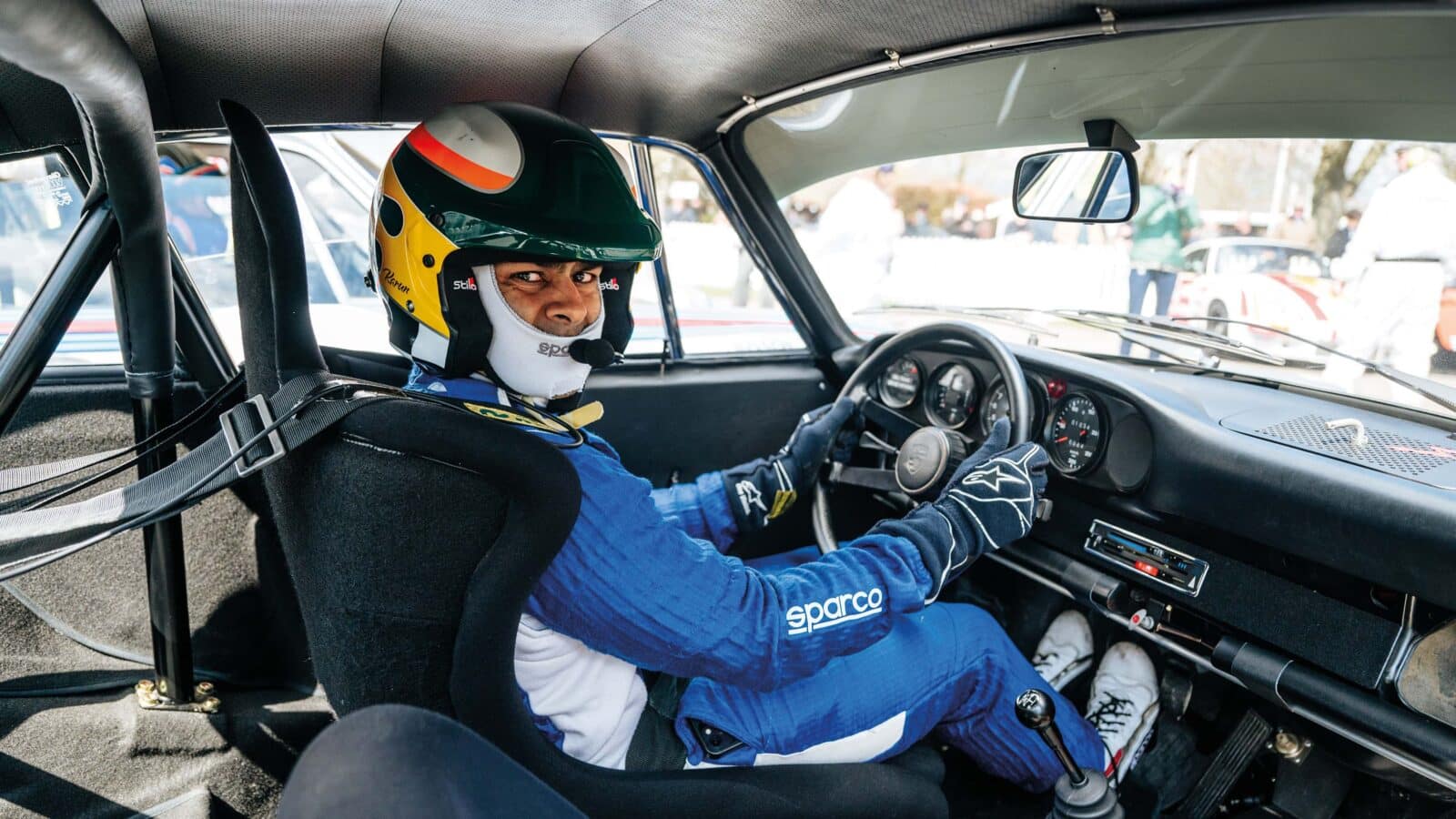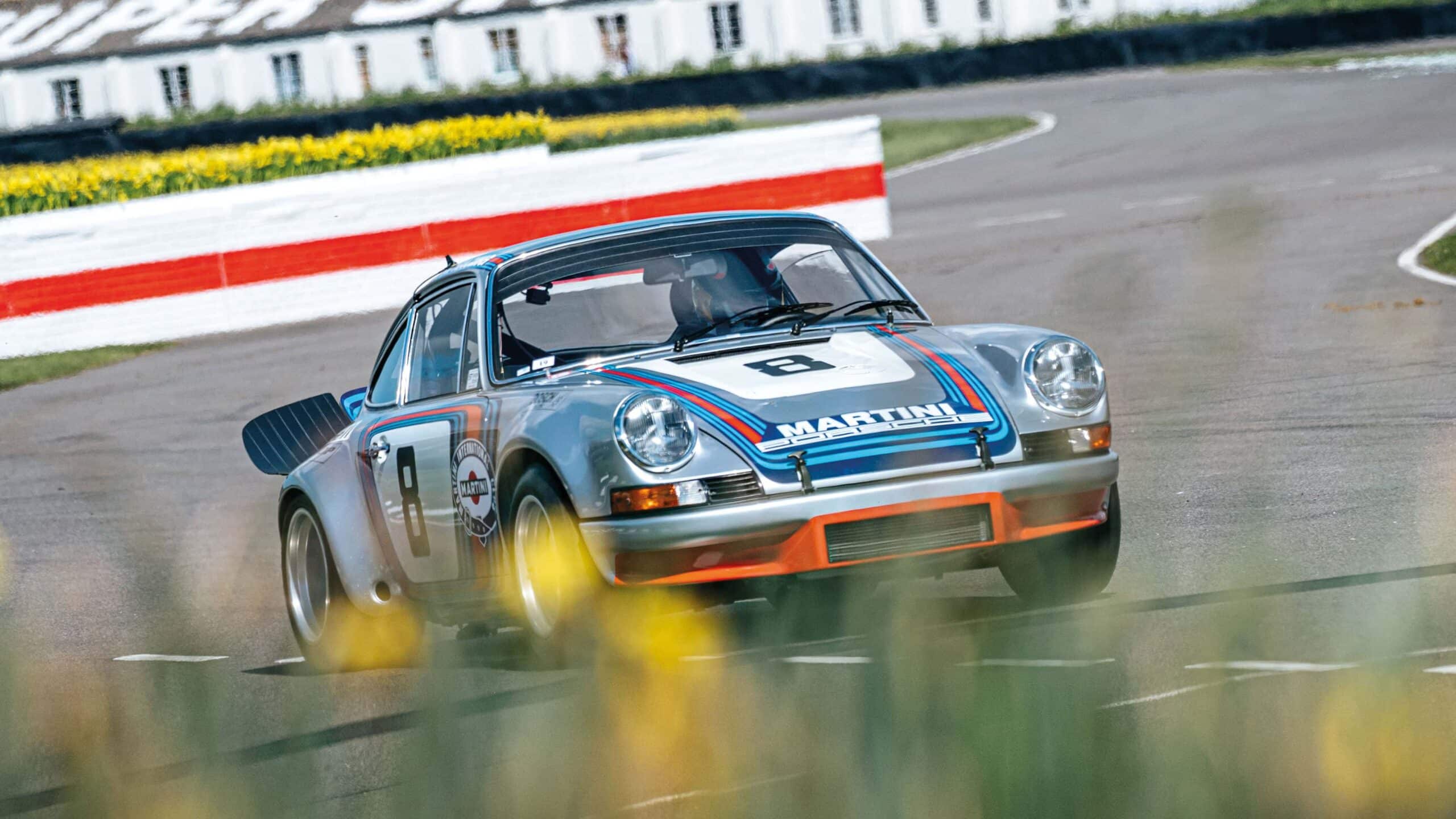Chandhok drives Porsche 911 RSR 'R6': the last Targa Florio winner
Racing driver and TV presenter Karun Chandhok takes the reins of the restored 1973 Targa titan

Swapping the Florio for the flora of Goodwood’s Members’ Meeting. Chandhok gets to grips with the RSR
Jayson Fong
Growing up, I was never really someone excited by supercars or GT cars, apart from a Ferrari F40. My world revolved around Formula 1 and while the Indy 500 and Le Mans were on my radar, it was impossible to follow it living in India in the late 1980s or early 1990s. If I’m honest, I was also never a Porsche fan growing up and always thought the Ferraris had a magic that tugged at your soul in a way that a perfectly engineered German machine never could.
However, all this changed when three years ago I drove a 911 GT2 RS, GT3 RS and a Turbo S within three weeks at three different tracks. I suddenly was angry with myself for missing out and my mission has now been to try and experience more 911s from history and make up for lost time!

The team from Goodwood was kind enough to ask if I would like to drive a 911 RSR at this year’s Members’ Meeting. I obviously said yes but only later realised it was the 911 RSR – known to enthusiasts simply as ‘R6’. This car won the last ever world championship Targa Florio in 1973 and the sister car won the Daytona 24 Hours earlier in the year against the Prototypes. Imagine if a current road car went to a round of the World Endurance Championship and beat all the Prototypes outright. We would never imagine that happening but that’s exactly what happened at Daytona in ’73.
It really was a bit odd sitting in the driver’s seat as the pedals feel off- centre to the actual seat. I felt as if the lower half of my body was angled to the right but once you get moving, it’s not even a consideration. What is slightly confusing is the gap between the brake and throttle pedals, which means that you can’t really heel-and-toe on a downshift, but need to have your foot completely off the brake and double de-clutch with your left foot while giving it a good blip with your right one.
The steering wheel is much bigger than I imagined but the bit that really wasn’t comfortable was how much the gear lever moved. Considering the drivers in the ’70s were in 24-hour races, it’s clear that comfort was a lower priority!
“The brakes on the R6 were excellent in terms of feel and retardation”
When you fire the engine up, the magic truly begins. The sound of that gorgeous 2.8-litre engine is superb. Release the clutch and the raspy growl as you get towards the shift point at 8000rpm is absolutely brilliant and epitomises everything that a burly 1970s sports car should sound like. The driveability of the engine is exactly what you would imagine from a Porsche. There are no real dips in the torque curve, nothing unpredictable in terms of surges of power when you’re looking for traction coming out of a corner and just usable power whenever you want it.
The chassis balance felt like it ticked every box that you expect from a 911. I’ve always considered the confidence inspiring neutral chassis balance to be a signature trait of the Porsches much more than their Italian competitors or the McLarens. Driving the R6, you really understand that this focus on creating a well-balanced car is something that runs deeply in the DNA of the 911 going back more than 50 years.
What is different is that a car from the 1970s is a good chunk lighter than anything that comes out of Weissach these days. That is no reflection on Porsche, but just a simple fact across the entire automotive industry which produces bigger and heavier cars these days to meet the safety norms as much as consumer wants.
This makes the R6 light and responsive and great fun to drive. The brakes on the car were excellent both in terms of feel and retardation. Under braking, the car pitches just the right amount to create the weight transfer you need to get the nose into the apex without any instability on the rear, which is so important with a rear-engined car. If you have any movement on the rear under braking, the mass of the engine would make it harder to manage, but this isn’t even a consideration.
Once you come off the brakes and get to the apex the car gives you a lot of confidence to carry the momentum and pick up the power early. This balance must have been so useful on events like the Targa with high speeds on the narrow, winding and often dusty roads.
The car has been restored by Porsche specialist Maxted-Page and it has done a superb job. It’s one thing to make it look right but mechanically it was perfect. Often when you drive the older cars, you get misfires or a long brake pedal or a clutch that’s tricky to use, but clearly this rebuild has been a labour of love and the results show.


